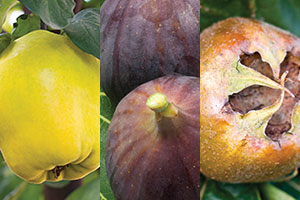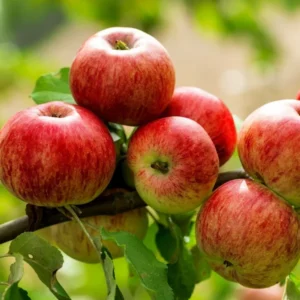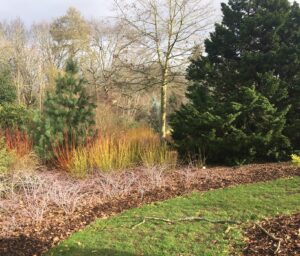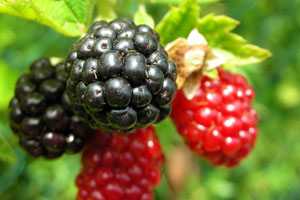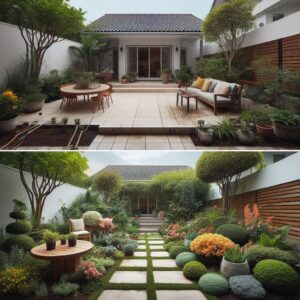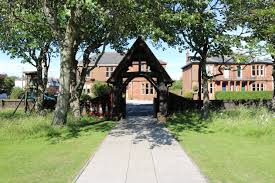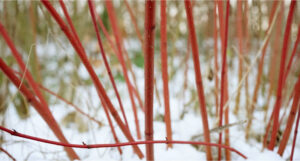Hedges don’t reduce road noise
Category: Garden Design
Planting A Small Mixed Orchard
Mixed orchards are the future of home growing
Best Apple Tree Varieties to Grow in the UK
The British climate makes for ideal apple territory. They like well drained, fertile soil including clay, and with shelter can grow inland at altitudes up to about 900 feet / 275 metres! Apple trees are the largest range of fruit trees we have for sale. Before you buy an apple tree, have a think about which varieties… Continue reading Best Apple Tree Varieties to Grow in the UK
Best fast-growing hedge plants for blocking the neighbour’s view!
Browse these fast growing evergreens for privacy hedges. If your neighbours are seeing too much for comfort, a mature hedge between you is a fine sight! But growing a privacy hedge in order to block the neighbour’s view requires patience. With these fast-growing species, your hedge will be towering tall as quickly as possible. The… Continue reading Best fast-growing hedge plants for blocking the neighbour’s view!
Best Plants for a Small Garden Wildlife Hedge
A good hedge is an invaluable addition to any garden. It delineates and disguises boundaries, providing privacy for humans and habitats for wildlife, with nest sites for birds and foliage, blossom, nuts, and fruits to eat. The leaf litter at the base of a mature hedge is perfect for hibernating creatures, especially reptiles and amphibians,… Continue reading Best Plants for a Small Garden Wildlife Hedge
Royal Horticultural Society Wisley Winter Walk
In January, gardeners stare longingly at soggy patches of lawn and bare trees, scouring the earth for the tender spear of a spring bulb or the plump purple protuberance of a leaf bud on a naked branch But, wait! I’ve already gone on about the best plants for a winter garden, which is all very… Continue reading Royal Horticultural Society Wisley Winter Walk
Best Plants for A Winter Garden
Tiny marvels dispel winter gloom: the uplifting power of nature! As I filled up the bird feeders yesterday, I noticed the intense dogwood stems contrasted against the fence, and the first winter clematis flowers emerging. I inhaled deeply, savouring the trace of witch hazel on the breeze. “Ah”, I said to myself, “I could feast… Continue reading Best Plants for A Winter Garden
Urban Fruit Growing: Soft Fruit Edition
Wiltshire-based garden designer Dan Combes wonders why there aren’t more berries, especially in urban areas and their small gardens where a fruit tree might be too big Over the last the weeks, I have planted thousands of bulbs: all inedible. But why (London, I’m talking to you especially) am I not being asked to plant… Continue reading Urban Fruit Growing: Soft Fruit Edition
Homes & Gardens Outdated Garden Trends
Homes & Gardens has so many interesting articles, we really should steal them more often. This pair of articles about outdated back garden trends and outdated front garden trends are nice for fertilising one’s thinking about one’s garden, its compartments, and the ancient “what I want” VS “what I, or my husband, will work or… Continue reading Homes & Gardens Outdated Garden Trends
Restoring Scottish Montane Flora & Bees for High Altitude Fruit Trees
Montane habitats are at the top of and above the treeline, where the last wind-blasted trees and shrubs grow, below the even colder alpine habitats above where only small grasses and lichens live. Being high on a mountain may be pleasant, but going up a hundred feet is like taking giant strides towards the North… Continue reading Restoring Scottish Montane Flora & Bees for High Altitude Fruit Trees
Fine Dining al Fresco: Shrubbery for Two
The other day we mentioned Cornwall’s Million Pound edible hedge project, and, we assume in response, the RHS updated their list of edible flowers, along with a Country Living article adding a few more on top. We know that most garden owners are not breakfasting in the bushes, brunching off branches, or dining on their… Continue reading Fine Dining al Fresco: Shrubbery for Two
Troon Church Garden Approved by South Ayrshire Council
This post is not sponsored by the South Ayrshire tourist board, but we are willing to accept gifts of any value over fifty Scottish pounds, or ten haggis in today’s money. South Ayrshire is part of the most beautiful scenery on our island, facing out onto the Firth of Clyde and the magical Isle of… Continue reading Troon Church Garden Approved by South Ayrshire Council
January-February Garden Tasks: Our Favourite Online Gardeners Share Their Tips
It’s almost February: time to do January garden jobs!
Garden Plants for Winter Colour
Colour from bark, leaves and some flowers will light up your winter garden
Why John Lord’s Gardening Films Are The Best
More people have taken the plunge into gardening with a floral shirt and a medium pickaxe thanks to John Lord than any other famous plantsman in Ireland’s Ratoath Gardens There is at least an introductory paragraph of reasons why John Lord’s YouTube films are the best before I get to my reason, so let’s ask… Continue reading Why John Lord’s Gardening Films Are The Best
Best Gardening & Garden Design Apps to Green Up Your Space
Gardening can be so last century with its stuffy old shovels and buckets. Garden apps on your phone gardening more Dan Dare® and Cyberpunk® than ever, giving you a reason to get outside and use your phone there. We’ve listed the best gardening and garden design apps for every level, from experienced gardeners to beginners.… Continue reading Best Gardening & Garden Design Apps to Green Up Your Space
Growing Fruit Trees at High Altitude
We get lots of enquiries about growing fruit trees in the UK at altitude, often from people who have seen Sepp Holzer at over 3600ft in Austria. We would love to sell as many orchards as we can, but for most honest gardeners in the UK, it will be very difficult to copy high altitude… Continue reading Growing Fruit Trees at High Altitude


